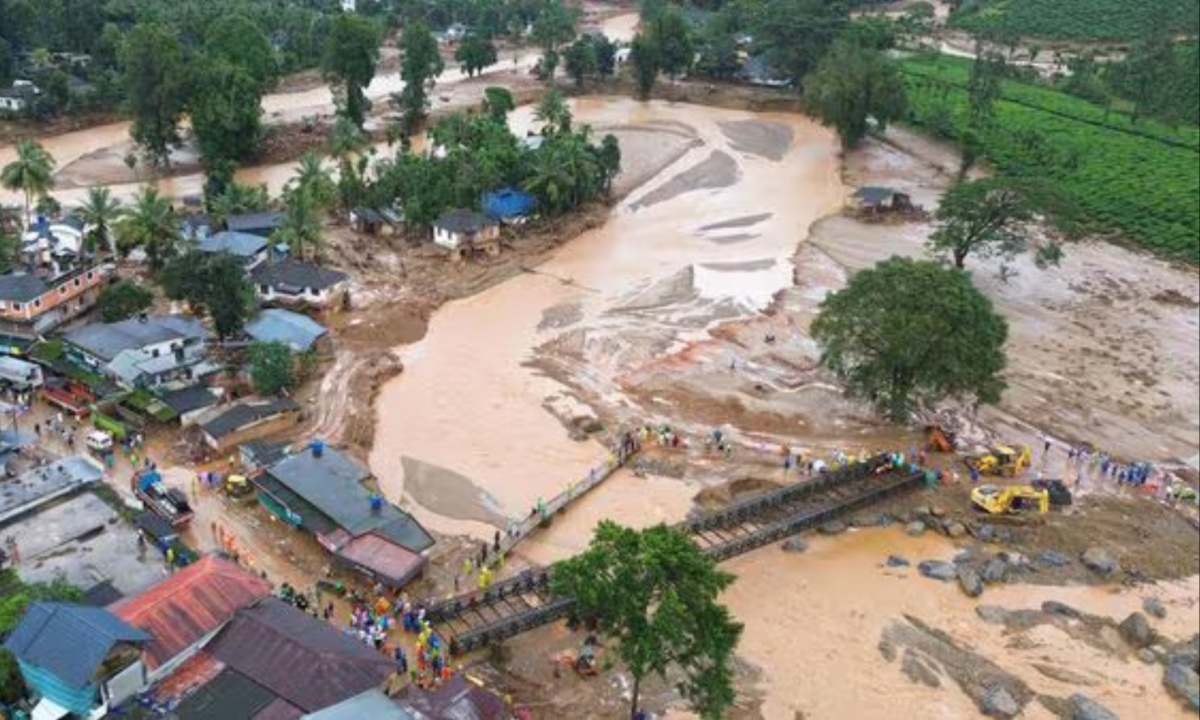On July 30, a devastating monsoon downpour resulted in massive landslides in the northern Kerala district of Wayanad, India, claiming the lives of hundreds. The region, known for its mountainous terrain and vulnerability to such disasters, faced severe flooding that destroyed infrastructure, including bridges and roads, and caused widespread power outages.
The extreme rainfall exemplified the challenges posed by climate change, raising questions about its impact on the intensity and frequency of such weather events.
Researchers from India, Sweden, the United States, and the United Kingdom conducted a comprehensive study to understand how human-induced climate change may have influenced the extreme weather conditions that led to the landslides.
The soil in Wayanad was already highly saturated from the preceding monsoon season, making it particularly susceptible to landslides when 140 mm of rain fell in a short period. This event was characterized by the one-day maximum rainfall recorded, marking Wayanad as the district most prone to landslides in Kerala.

The analysis revealed that the heavy rainfall experienced during this event was one of the most significant on record, with only two other instances in 1924 and 2019 surpassing it. In the current climate, which is approximately 1.3°C warmer than pre-industrial levels, such extreme rainfall events are estimated to occur once every 50 years.
The study further indicated that heavy one-day rainfall events in the region have intensified by about 17% over the past 45 years, correlating with a 0.85°C rise in temperature.
Using advanced climate models, researchers found a projected 10% increase in rainfall intensity due to climate change, which could escalate to an additional 4% if global temperatures rise by 2°C.
Although there is a degree of uncertainty in these projections, they align with broader scientific evidence indicating that a warming atmosphere holds more moisture, leading to heavier rainfall. This finding underscores the urgent need for adaptation measures in Wayanad, particularly considering the increased risk of landslides in the face of future extreme weather events.
While the Indian Meteorological Department had forecasted the extreme rainfall and issued warnings, the information was too general to effectively guide local evacuation efforts. Implementing slope-specific early warning systems could provide better protection but may be costly and challenging.
The study also noted mixed evidence regarding the relationship between land use changes and landslide risk in Wayanad, suggesting that factors like deforestation and quarrying for building materials have heightened the region’s vulnerability.
As climate change continues to drive extreme weather patterns, the need for proactive measures, such as reinforcing slopes and developing early warning systems, becomes increasingly critical for safeguarding communities in landslide-prone areas.


